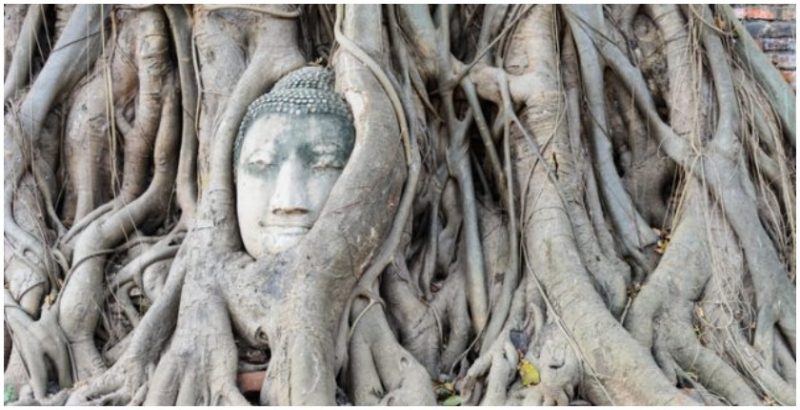The ancient ruined city of Ayutthaya is of one Thailand’s most famous attractions, and millions of tourists flock there every year to see the beautiful temples and palaces left behind by the rich Siamese kingdom.
One of the biggest attractions of the site, however, is not a lavish temple complex or a palace, but rather a single tree at the temple of Wat Mahathat. The reason is simple: look a little closer and it is possible to see the serene face of the Buddha gazing up from the aerial roots of this twisted banyan tree.
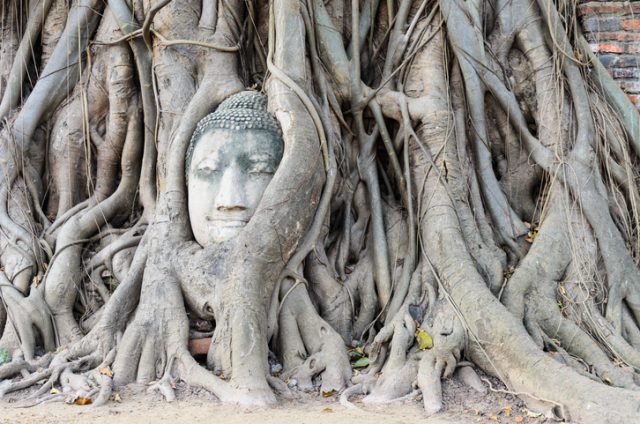
The Buddha’s head is a major tourist attraction and is thought to be the most photographed object in the entire archaeological site. It certainly makes for an intriguing image: from the tangled roots of the ancient tree, the Buddha’s head peers out, appearing to emerge from the very bowels of the tree itself. No one knows for sure how it came to be there, and why it was deposited inside this tree in particular.
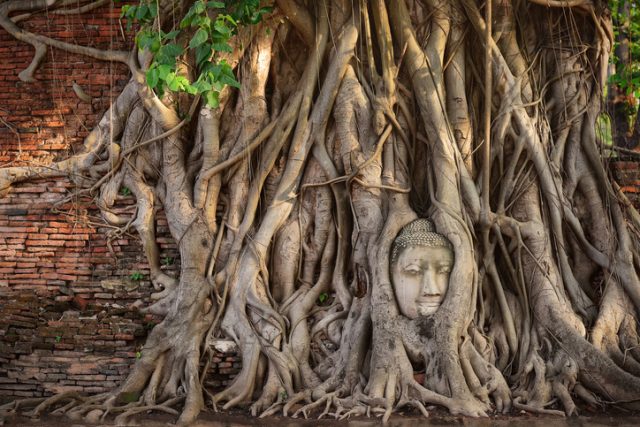
Ayutthaya was established in c.1350, and soon emerged as the second capital of the flourishing kingdom of Siam. According to UNESCO, between the 14th and 18th centuries, this beautiful city was one of the most vibrant, cosmopolitan cities in the region, and operated as a center of global trade and commerce.
Ayutthaya’s success was partly down to its strategic location. Perched on an island surrounding three rivers that connect to the sea, it was easily defended from attack yet open to trade and diplomatic envoys. It was also protected from seasonal flooding, unlike many other settlements in the region. It’s no surprise that the city grew in importance and continued to flourish throughout the late medieval and early modern periods.
Related Video: 6 World Famous Land Marks Hiding Something From The Public
The wealth that flowed into Ayutthaya was channeled into important building projects. It is particularly well known for its tall reliquary towers, also known as prang, which have a distinctive conical shape and are set upon elaborately sculpted plinths.
In addition, the city was home to a number of lavish Buddhist monasteries. Buddhism plays a key role in Thai culture and history, and the ancient Siamese monarchy was a key patron of what became the state religion. According to the BBC, the city became known as a center for Thai Tantric Theravada, which was a mainstream form of Buddhism in Cambodia, Thailand and Laos.
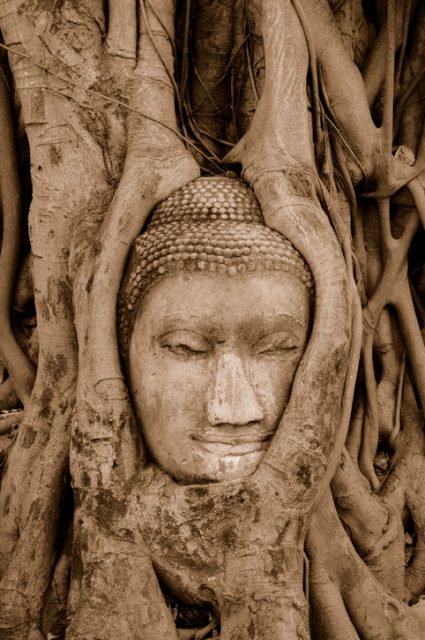
Ayutthaya’s wealth permitted many grand monasteries and temples to be constructed, including Wat Mahathat, otherwise known as Temple of the Great Relic, at some time around the year 1374. This temple was one of the most important in the city, located next to the grand palace. It was known as a royal monastery, and the royal family took part in an annual procession to Wat Mahathat every year to make offerings and pray for prosperity.
However, in the 18th century, disaster struck the city. The neighboring Burmese kingdom launched an incursion into Siam in 1767, and sacked Ayutthaya. The invaders razed the city to the ground, and inflicted a devastating blow to the local population, in addition to destroying much of the wealth, artifacts and historical records that were contained in the city.
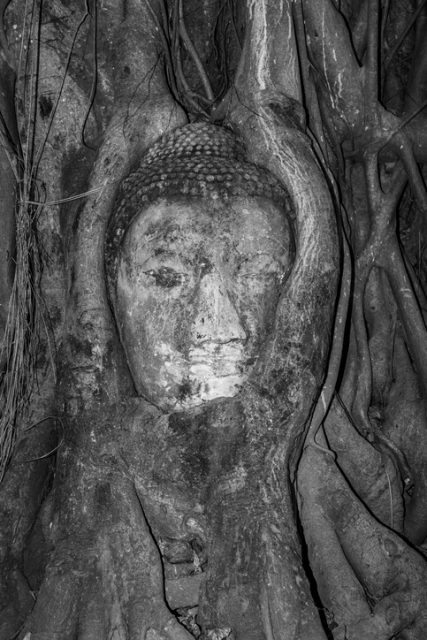
According to UNESCO, the temple of Wat Mahathat was looted and set on fire, and considerable damage was done to the monumental statues of the Buddha that adorned the temple and other buildings in the city. In this period, and in subsequent years, looters would remove the heads of these beautiful statues of the Buddha and carry them away to be sold.
This may provide some insight into why the head of the Buddha came to be in the banyan tree at Wat Mahathat. It may be that, at some point after 1767, an enterprising looter carried off the head, only to realize he could not take it away. He left it hidden in the banyan tree, but never came back to claim his prize. Over the years, the tree continued to grow around the head, and it now lies nestled in its roots.
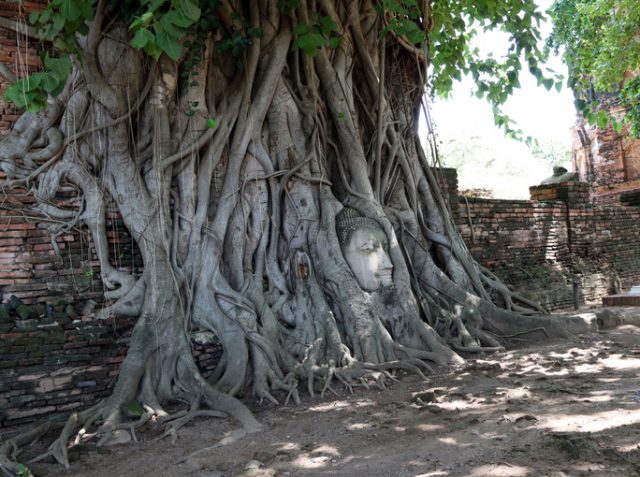
Whatever the explanation, the Buddha’s head is one of the most intriguing and unusual sights at Ayutthaya, a site already rich in architectural and historical wonders.
Read another story from us: China’s Unearthly Ghost Village Totally Overgrown by Vegetation
Undoubtedly, this spectacular ancient city and its uniquely adorned tree will continue to attract photographers and tourists for many years to come.
